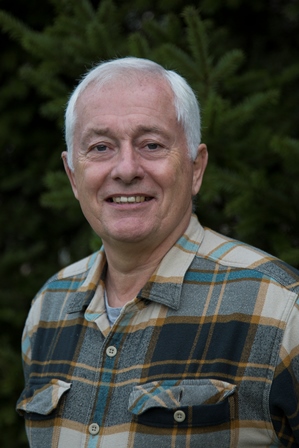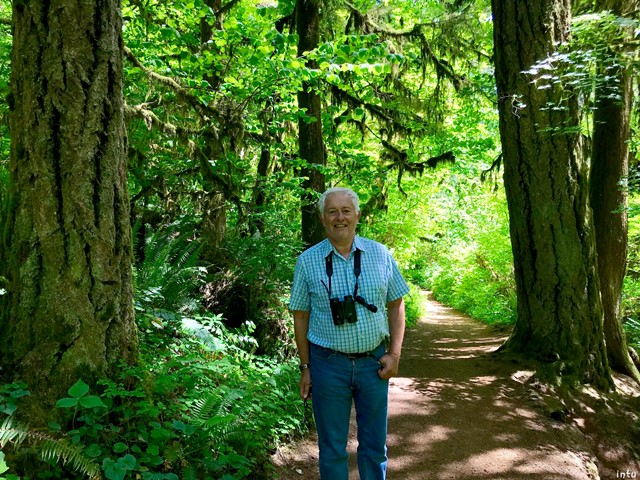‘Boots on the ground’: Jeff Sayer, APRIL Stakeholder Advisory Committee
Jeff Sayer, a member of APRIL’s Stakeholder Advisory Committee, believes that successful conservation is inextricably linked to the economic circumstances of the people living in the landscape.
Post-war London is not the obvious nursery for someone who would spend his life immersed in the complex nexus of social and environmental sustainability. But it was for a young Jeff Sayer, who was born, appropriately enough, in one of the last remaining ancient forests in the UK, Epping. He spent his childhood doing what children do – climbing trees, exploring – and developed a passion for natural history.
“I think I reacted against an urban environment,” he says. “When I was young, almost everyone in the outer reaches of London had relatives who lived in the countryside. So if I wasn’t scrambling around Epping forest, I was scrambling around farms and fields in my families’ homeland in Norfolk. I particularly remember the wonder of bomb sites and abandoned military land in east London, where wildlife was reclaiming its place and forest was regenerating”.
Sayer studied botany and zoology at Hull University, and then took a Masters in Conservation at University College London. It was here that he encountered some of the giants of the early days of conservation – John Morton Boyd, Max Nicholson, Dudley Stamp, Peter Scott, and the legendary David Attenborough. These people were, in many ways, the pioneers of the sustainability movement.
His first break came when he was aged 22, and camping in the wilds of Dartmoor, doing research for his Master’s degree. He had applied for a job which required someone over 27 with a PhD. He was neither. Through some extraordinary fluke in the British postal service, he got a telegram saying that if he could leave immediately for Zambia, he had the job.

Professor Jeff Sayer, Stakeholder Advisory Committee
Sayer spent three years there, working on the interaction between charismatic wildlife and conservation. He next moved to Mali, where he began work on establishing a protected area system, a role he played in many countries over the following decades.
“It was here. I think, that I had my Damascene conversion. There was a catastrophic drought in the Sahel then. We were faced with the tragedy of people dying of starvation in the same landscapes where we were trying to conserve the spectacular Sahelian wildlife. I felt strongly then that sustainability must be seen in the round. Everywhere there is an urgent need to conserve nature, there is also poverty and social stress. They have to be tackled together. In Benin, for example, I was handed a budget to buy heavy equipment to begin work on roads for the national park. Instead I spent it on the villagers. They did the work, they earned money, they had what we now call ‘skin in the game’. It worked”.
Sayer is something of a nomad. He has lived and worked all over the world, often in extremely challenging situations, but always connecting the plight of people with the plight of the natural environment. He has worked with hill tribes in Thailand and Burma, and has travelled throughout the Amazon and Congo Basins, and of course in Indonesia. In Afghanistan, while working on protected areas, war broke out. “There we were, working to preserve some astonishing wildlife, while MiG fighters roared overhead and bullets came through our office windows”.
His commitment to what he sees as an indivisible social and natural landscape means he also feels strongly that, irrespective of the risks, to understand and achieve conservation, you have to have boots on the ground. Throughout his career, he stayed in contact with the World Wildlife Fund (WWF) and the International Union for the Conservation of Nature (IUCN). While working in the field in northern Burma, he learned that the IUCN needed someone to start their tropical forest programme. This seemed like an amazing opportunity to engage in global forest conservation issues and Sayer moved to the relative peace of Switzerland, where he led the team that began to put together the first detailed atlases of the world’s three major tropical forest regions.
A decade later, he had his chance to impose his integrated conservation theories on a wider stage, when CIFOR asked him to be its founding Director General in Indonesia. At that time, taking an integrated approach to the social and biological issues around forestry was seen as pretty innovative. But Sayer assembled a multi-disciplinary team, and together they changed the way people understood forest problems. For the next ten years, he worked on human/forest interaction, deploying a range of specialists, from anthropologists to economists. “I could pick all the best people in the world to further our goals. We had a dream team”.
Amongst other things, Sayer was active in producing the first guidelines for land development in Indonesia, which were adopted into Indonesian public policy. Around this time, he first drew attention to the dangers of developing peatlands.
Sayer joined APRIL’s Stakeholder Advisory Committee at its inception, bringing his experience in human/landscape interactions to bear on the discussions. “There are what I refer to as sentinel landscapes. The Kampar is one of them. The future of landscapes like this is in the hands of the next generation, as well as enlightened businesses. Part of my work continues to be to bring bright, highly educated young people into these landscapes, in the course of their masters and doctoral work, to see and feel, to experience. These people will be the conservation leaders of the future”.

In 2018, he and his wife, Intu Boedhihartono, an Indonesian anthropologist who shares his passion for getting ‘boots on the ground’, moved to Canada, where he is a Professor at the University of British Columbia’s Department of Forest and Conservation Sciences.
His views on a future approach to conservation are robust and rooted in his philosophy that economic development is a part of, not a hindrance to, success. “NGOs shine a light on problems, and that’s a good thing. But conservationists that oppose development are being short sighted. Indonesia is an interesting example. There has been terrific economic development, and of course, some of it has caused problems. But the fact remains that a rapidly growing population of over 260 million people need a stable government, access to healthcare, education, fair wages, and fair treatment, and through that, a form of buy-in to the need to conserve such a wonderful natural environment. This is the responsibility of a lot of actors – government, business, NGOs, community groups, academics and scientists. But the bottom line is you can’t have the one, successful conservation, without the other, successful economic stability and growth. The two are not incompatible. They are inextricably linked”.




